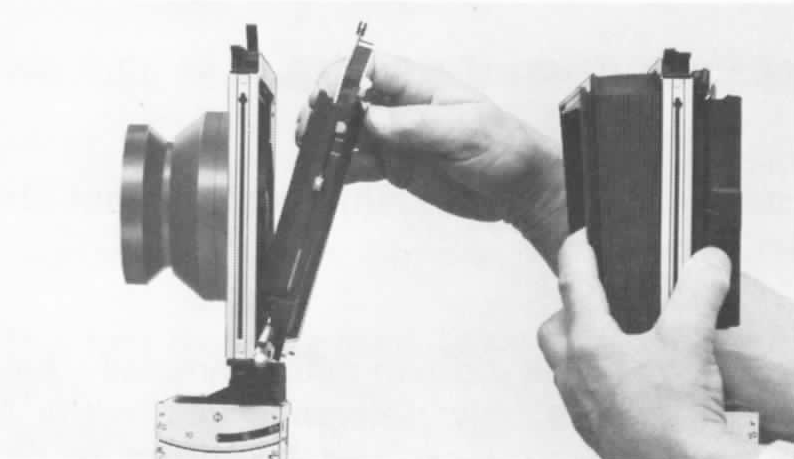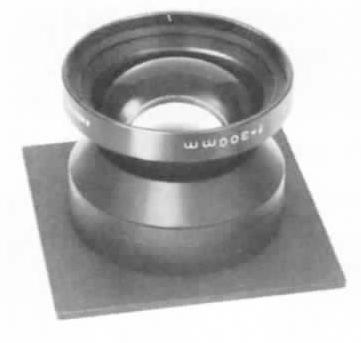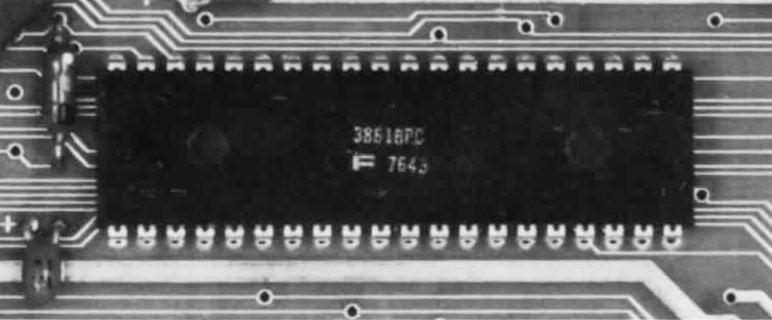Closer shooting concentration … even with the view camera
by Carl Koch
Part 2


Exposure handling
Introduction
The first article described «closer shooting concentration» with the view camera with respect to camera movements. (Refer to SINAR Information No. 13).
In this article we are dealing with the simplifications with regard to the actual exposure handling, i.e. with the phase between the completed setting and the «click». It concerns a rather short period of time which belongs to the phase requiring the best concentration of the photographer, however. In other words, after completion of the desired framing exposure should be possible immediately without any further complications.
The adjustable view camera is not a «rapid exposure» camera all the same, but remains a camera for «tailor made» pictures. This does not in any way, however, justify the complicated and faulty method of operation for exposure, which is still seen often today and which corresponds to the technical state of the twenties!
Actual state
The «exposure procedure» is carried out as mentioned, very often as in grandfather’s age, even with new professional cameras. In front of the camera – cock shutter – open aperture – picture control behind the camera – in front of the camera, stop down (very often with scales which are poorly visible and difficult to read), close shutter – behind the camera to insert the film holder … and finally … exposure (if cocking was not forgotten).
No wonder that this kind of view camera is regarded as being a «complicated tool» and this quite rightly!
The modern professional camera has also undergone significant changes in this respect and we want to take a closer look at this.
Theoretical state
The view camera – in the same way as the modern reflex cameras – belongs to the category of «ground glass screen» cameras. The only difference lies in the fact that it does not have a swing mirror. As far as the operation and handling is concerned, the two cameras are in principle identical, i.e. open shutter and aperture for ground glass screen setting, closed shutter with stopped down lens for the subsequent exposure.
There is thus no good reason for the fact that important simplifications for handling (incl. shutter cocking) are not present in view cameras although they are all taken for granted in the reflex cameras. (A reflex camera without these automatic features would certainly never find a customer!). It is precisely the view camera, with its valuable «tailor made pictures» which logically requires measures to prevent faulty handling and the resulting agony and waste which results from this. It is also senseless to waste «concentration» on manipulations which are redundant. With this the most important theoretical requirement with regard to the automation of the exposure procedure for view cameras is stipulated. This demands an entirely different shutter-aperture concept, however. The widely used between-lens shutters of conventional construction thus no longer suffice.


The SINAR solution
It goes without saying that the automation of several single shutters makes these considerably more expensive. In addition, special adjusting aids are necessary for each individual shutter for easy reading and setting of aperture and speed. Between-lens shutters of this modernised type for each lens will therefore soon cost as much as (or even more) than ONE universal behind-lens shutter which
- can be used for any number of lenses,
- makes a uniform operation and exposure possible for all the lenses used,
- meets the special requirements of professional photography,
- allows further automation.
As a result of these significant advantages SINAR has dealt with the construction of behind-lens shutters for years already. Known the world over is the
- mechanical SINAR auto-aperture shutter (Fig.1).
A new addition
- is the electronic SINAR DIGITAL shutter (Fig. 2).



Both shutters can be integrated into the well planned SINAR system. Instead of having to buy a new camera, the photographer can fit the respective SINAR shutter into his camera by himself (Fig. 3). For SINAR owners this also means a large saving in modernising his equipment since he can do this without requiring a new camera.
The two shutter models can be exchanged at will on the SINAR cameras.*
°For SINAR cameras constructed in the years 1948 -1971 only the locking lever need be exchanged, which can be done by yourself. Order No. 109.05.557



The same applies to the SINAR «DB» lenses (DB= automatic diaphragm control) (Fig. 4). In order to also make this modernisation economically feasible, DB-conversion sets are available, so that the lenses which you have need not be replaced but can merely be remounted.
Conforming to the SINAR System all other SINAR lenses (also those with between-lens shutters) can of course be combined with the SINAR shutters, provided that the lenses are mounted on SINAR lens boards according to the manufacturer’s instructions.
The improvements
Let us briefly summarise the most important simplifications with regard to handling and the main improvements offered by the SINAR behind-lens shutters:
- ONE shutter for all lenses used = economical modernisation
- ONE shutter for all lenses used= uniform handling and uniform exposure ( !)
- Reading and operation from behind the camera (without having to purchase special accessories)
- Automatic shutter cocking (for all lenses used)
- Shutter automation (for all lenses used)
- Automised diaphragm setting (DB-lenses)
- Disengaged flash contact during observation of ground glass screen (for all lenses used)
- Built-in holder for the protected use of filters behind the lenses.
These improvements are not merely technical gags – as is obvious to the professional, but specific measures for the simplification and improvement of the handling of view cameras.
2 Models
The mechanical SINAR-Auto-aperture shutter makes exposure times of 1/60-8 sec. + B possible. Automatic diaphragm control with 1 /3 stop intervals between f 5.6 and f 45 (smaller stops to be controlled manually).
The electronic SINAR DIGITAL shutter makes exposure times of 1/500 to 64 sec. possible, with 1 /3 stop intervals, + B. Second indicator for long time exposure. Automatic diaphragm control with 1 /3 stop intervals between f 4 and f 45 (smaller stops to be controlled manually).
Further details can be found in the relevant prospectuses available from your SINAR agent or from SINAR LTD. Schaffhausen.
The electronics
Electronics – as compared to mechanics – makes important improvements in shutter construction possible with regard to exposure intervals, exposure precision, repeatability, endurance, temperature differences as well as automation. It is thus ESSENTIAL in modern camera construction.
SINAR – well known as a pioneer – has taken the significant step into electronics. 5 years of intensive development, research and strict tests led to the present SINAR DIGITAL shutter. It is quartz controlled and corresponds to the latest standards of DIGITAL technology, based on the newest micro-processor technics. (This changeover has unfortunately caused the delay in the delivery!)
The exposure accuracy
According to DIN-Standards a time tolerance of approx. + 37 to -27% is admissible for speeds of 1/125 sec. and shorter.
Faulty exposures always occur when shutter tolerances inherent in the system, add up partially or totally to diaphragm tolerances, exposure reading scattering, sensitivity tolerance and tolerances in the development. An attempt is thus made to reduce these individual tolerances as far as possible so that even an unfavorable combination still lies within the exposure latitude of the film. In the case of instant material (direct positive) this places rather high demands on the exposure accuracy.
In order to meet these requirements a new type of shutter blade system was developed to complement the precise time control of the electronics for the SINAR DIGITAL shutter. 2 free rotating blades follow each other after a brief acceleration, uninhibited and with their own rotational energy. The synchronous motion of the blades is controlled optoelectronically, i.e. without any contact whatever. In addition neither the blades touch each other nor do they overlap or touch the housing. As a result of this the usual mechanical friction was greatly reduced. Only in this way was it possible to attain remarkably small scattering even in the case of short exposure times (e.g.1/125 sec = max.½ of the DIN tolerance range). In addition, this accuracy is guaranteed for each lens – thanks to the behind-lens shutter. It thus has a remarkable influence on the quality and repeatability of the exposures.
Furthermore, this accuracy – and the electronics – also permit a further division of the exposure times to 1/3 stops – in the same way as for the aperture. As a result of this any desired compensation between diaphragm and exposure time and vice versa is possible using equal 1 /3 intervals.


Why short exposure times down to 1 /500 sec.?
It is obvious that the view camera is not a camera for «sport photography»!
The sensitivity of film emulsions is constantly being increased. This in its turn leads to shorter exposure times.
As in the case of a view camera, the creative differentiation of the sharpness control in the picture must be ensured (e.g. to selectively separate sharpness from blur in the picture) and one cannot at will stop down without altering the character of the take. In such cases the short exposure times increase the creative freedom and subtleties. The accurate exposure times, however, also permit multiple exposures in the short time range, particularly in daylight. On the other hand, shorter exposure times necessitate even more accurate shutters. The relation to higher precision is thus obvious.
Automation
The built-in «wonder unit», the micro-processor, is also a «switchboard» for the automatics in the SINAR DIGITAL shutter. We have already included the future in the processor because of its large capac.ity ! It is well thought out and has scope for extension – as everything else in the SINAR system.

One of the 3 micro-processor units in 1 : 1 ratio.
Summary
The far reaching progress in view camera construction regarding camera movements, presented in part 1 (SINAR Information No. 13), now also applies for exposure handling. With this, a further important step towards perfect pictures has been taken.
We have now also come closer to the ultimate goal «Closer shooting concentration leads to better pictures» even with the view camera.
The fact that this innovation comes from the inside, so to speak, i.e. from exchangeable parts – and not from a change of camera model – substantially increases the value of SINAR cameras on the world market. Now every SINAR owner can step onto a new convenience level – and even into the electronics age!
It fills us with great satisfaction to illustrate the advantages offered by a well thought out system, not only with regard to the practical application, but also from the economic point of view. SINAR cameras are not cheap, but certainly worth their money.
The future lies in closer shooting concentration … even for view cameras.



